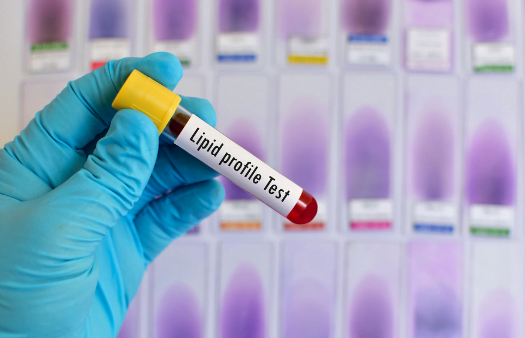Phospholipid Oxidation Testing in Processed Foods
The integrity of processed food products is crucial to their quality and safety. Phospholipids play a critical role in the stability, texture, and nutritional value of these foods. Over time, phospholipids can undergo oxidative degradation, leading to off-flavors, reduced shelf life, and compromised product quality. Understanding and monitoring this process through phospholipid oxidation testing is essential for maintaining the highest standards in processed food production.
Phospholipid oxidation involves the addition of oxygen to a phospholipid molecule, leading to the formation of hydroperoxides. This reaction can be catalyzed by various factors including heat, light, and microbial activity. The extent of this oxidation is typically measured using specific analytical methods that detect these reactive species or their breakdown products.
One common method for assessing phospholipid oxidation in processed foods involves the use of peroxide value, which quantifies the amount of peroxides present. Another widely recognized approach is the thiobarbituric acid-reactive substances (TBARS) assay, which detects aldehydes generated during lipid peroxidation. These tests are crucial for ensuring that processed foods meet strict quality and safety standards.
In a typical testing process, samples from various stages of food production are collected and prepared according to specific protocols. The specimens are then analyzed using advanced instrumentation such as high-performance liquid chromatography (HPLC) or gas chromatography-mass spectrometry (GC-MS). These methods provide precise quantification of the oxidative markers, allowing for accurate assessment of phospholipid stability.
The importance of phospholipid oxidation testing extends beyond mere quality control. It also plays a vital role in regulatory compliance and consumer safety. For instance, the ISO 15873-1 standard outlines procedures for evaluating the oxidative stability of fats and oils in food products. Compliance with such standards ensures that processed foods meet international quality benchmarks.
The testing process not only aids in product development but also informs formulation adjustments to enhance shelf life and sensory properties. By understanding the extent of phospholipid oxidation, manufacturers can optimize processing conditions, select appropriate ingredients, and extend the shelf life of their products. This is particularly important for high-fat foods like spreads, dressings, and nut butters.
Moreover, phospholipid oxidation testing helps in identifying potential sources of spoilage and quality degradation. For instance, excessive heat during processing can accelerate this reaction, necessitating careful control over manufacturing parameters. Understanding these dynamics allows food manufacturers to implement strategies that minimize oxidative stress on their products, thereby enhancing overall product quality.
In conclusion, phospholipid oxidation testing is a vital component of the quality assurance process in processed food production. By leveraging advanced analytical techniques and adhering to international standards, manufacturers can ensure that their products meet stringent quality and safety criteria while maintaining consumer trust.
Applied Standards
The analysis of phospholipid oxidation in processed foods is governed by several key international standards. These include:
- ISO 15873-1: Fats and oils - Determination of peroxide value
- ASTM D6972-03(2018): Standard Practice for Evaluation of Oxidation Stability of Fats and Oils
- ISO 5450: Determination of peroxidic value in fats, oils, and fatty substances
- ASTM D6973-18(2021): Standard Practice for Evaluation of Peroxide Number of Fats and Oils
- ISO 5461: Determination of peroxide value in fats, oils, and fatty substances
These standards provide a robust framework for testing, ensuring that the results are accurate, reproducible, and comparable across different laboratories. Compliance with these guidelines is essential for maintaining product quality and meeting regulatory requirements.
Benefits
- Maintains product integrity and safety
- Enhances shelf life of processed foods
- Supports compliance with international standards
- Promotes consistency in formulation adjustments
- Facilitates identification of potential spoilage sources
- Aids in optimizing processing conditions
Competitive Advantage and Market Impact
- Builds trust among consumers by ensuring product quality
- Enhances brand reputation through consistent performance
- Maintains regulatory compliance, reducing legal risks
- Promotes innovation in formulation to extend shelf life
- Achieves market differentiation with superior product performance
- Supports long-term business sustainability by minimizing waste and spoilage





